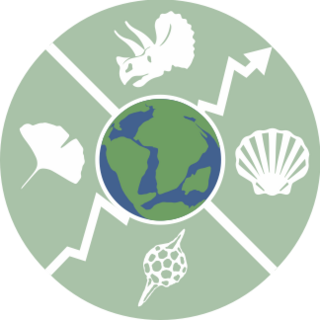
Pantolambda is an extinct genus of Paleocene pantodont mammal. Pantolambda lived during the middle Paleocene, and has been found both in Asia and North America.

Ailuravus is a genus of prehistoric rodents in the family Ischyromyidae.

Fossilworks was a portal which provides query, download, and analysis tools to facilitate access to the Paleobiology Database, a large relational database assembled by hundreds of paleontologists from around the world.
Macrocephalochelys is an extinct genus of turtles in the family Chelydridae. It was first described from a partial skull from the Pliocene found in Ukraine by Piboplichko and Taraschchuk in 1960. It was assigned to the family Chelydridae by R. L. Carroll in 1988 although it had been hypothesised to belong in Chelydridae by Chkhikvadze in 1971.
Gomphodontosuchus is an extinct genus of cynodonts. It was created to describe the species Gomphodontosuchus brasiliensis.

Albertogaudrya is an extinct genus of astrapotherian mammal that lived in present-day Patagonia and Salta, Argentina during the Eocene 48.6 to 37.2 million years ago. Fossils of Albertogaudrya have been found in the Lumbrera and Sarmiento Formations. It is named after French palaeontologist Albert Gaudry.

The Paleobiology Database (PBDB) is an online resource for information on the distribution and classification of fossil animals, plants, and microorganisms.

The Ohio Shale is a geologic formation in Ohio. It preserves fossils dating back to the Devonian period.

Tasbacka is an extinct genus of sea turtle containing several species.







